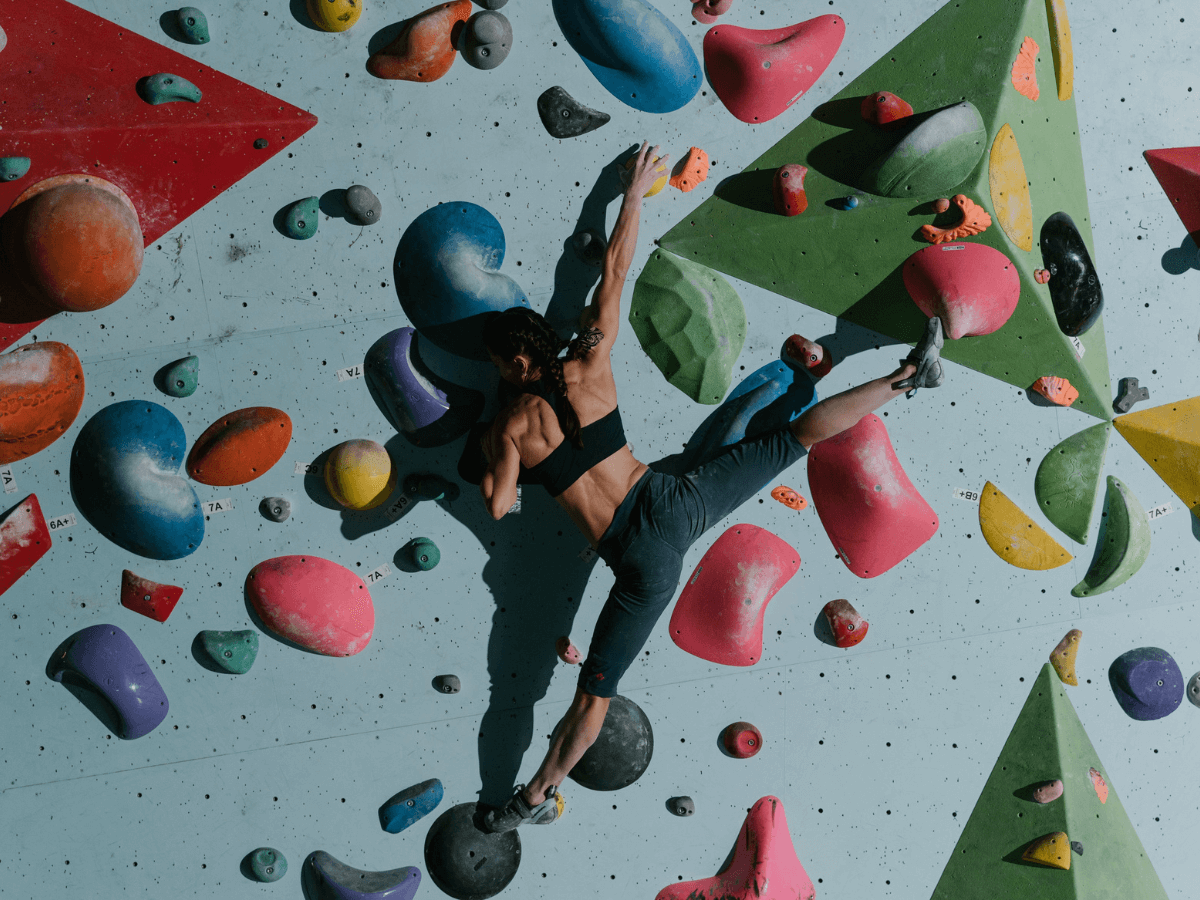What is Ape Index and Why Does it Matter for Climbing?
The glorious ape index. Praised if positive and blamed for failed sends if negative. Whether or not you're familiar with the term, it's bound to come up in climbing conversation after climbing conversation.
So what is an ape index? Is it some scientifically computed anatomical measurement? Is it an essential component for your success in climbing? We dive into the answers to these questions and more in this article, so keep reading. And, if you think you already know everything about ape indexes, test your knowledge against ours and let us know how you did in the comments below!
What is an ape index?
Ape index, sometimes called ape factor or gorilla index, is a ratio of the length of your arm span relative to your height. The Roman architect, engineer, and writer Vitruvius formalized the term based on his conclusions from studying Leonardo da Vinci's Vitruvian Man. The Vitruvian Man has an arm span equal to his height, which led Vitruvius to dub the "perfect" ape index, where the ratio of arm length to height is one.
How do you measure your ape index?
Measuring your ape index is simple. You'll need someone else to help you and a tape measure. Standing up straight with your arms extended directly out to the sides, have your helper measure your wingspan from the tip of your middle finger on one side to the end of your middle finger on the other. Then, standing up straight against a wall, have your helper measure your height (without shoes) from your heels to the top of your head. Once you have your wingspan's length and height, compare the two. If they are equal, you have an ape index of 0. If your wingspan is longer than your height, you have a plus x (x equals the number of inches difference) index. If you have a wingspan shorter than your height, you would say you have a minus x (again, x equals the number of inches difference) ape index.
Ape Index and Climbing
Why is the ape index talked about so much in the rock-climbing community? From a simple and logical standpoint, rock climbing is about advancing to the top of the route or problem. Suppose you have a more extended reach relative to your height. In that case, the logical assumption is that you can top the climb more efficiently because you can easily reach between holds. However, the basis of this logic has varying scientific evidence to support it. Yes, sometimes having longer arms means standing up and grabbing the next hold rather than needing to jump. Primarily, the debate around the ape index is regarding the degree to which a larger ape index provides a competitive advantage. The limited studies available, such as those by Ozimek et al. (2017) and Watts et al. (2003), conclude that there is no direct indication between the ape index and increased climbing ability. Instead, like any sport, there are ways to train to increase strength, flexibility, and power. All of these climbing-related skills have the potential to improve success beyond perceived anatomical "advantages."
We won't discourage you from blaming your potentially negative or +0 ape index for not sending a sport route or boulder problem. Everyone has those high-gravity days where we need to throw the blame at anything else to keep us from getting unreasonably frustrated. However, even if you don't have those extra inches on your reach, you can still follow in the footsteps of some of the world's most renowned climbers. Take Lynn Hill, the first person to free ascent The Nose on El Capitan in a day. She has a +0 ape index and stands 5 feet 2 inches tall, yet she is one of the most accomplished climbers of any generation. Or look at Alexander Megos—the first climber to on-sight 9a on sport and another world-renowned climber with a +0 ape index.
Your ape index is a fun statistic for conversation and the gym or crag. But, its legitimacy as a climbing advantage is yet to receive adequate scientific confirmation. Training hard and focusing on building strength, technique, and other skills are the most valuable tools to increase your climbing ability. It's not like you will stretch out your arms or hate them for not having the desired ape index. Be grateful for your body, measure your ape index for fun, and keep climbing!
Let us know your thoughts on ape indices in the comments below, and just for fun, if you know what it is, drop your index!

